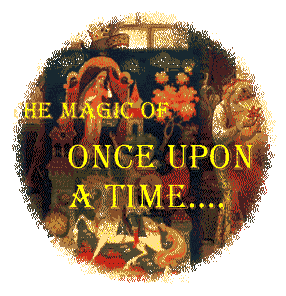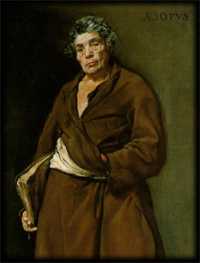|
Narrative Logo - Click for Main Menu Lecture V: Tale Types and Motifs
Animal Tales--the basis of Fable
The word fable derives from the Latin word fabula, which originally meant about the same as the Greek mythos; like mythos, it came to mean a fictitious or untrue story. Myths, in contrast, are not presented as fictitious or untrue. Fables, like some myths, feature personified animals or
natural objects as characters. Unlike myths, however, fables almost always end with an
explicit moral message, and this highlights the characteristic feature of
fables - namely,
that they are instructive tales that teach morals about human social behavior. Myths, by
contrast, tend to lack this directly didactic aspect, and the sacred narratives that they
embody are often hard to translate into direct prescriptions for action in everyday human
terms. Another difference between fables and myths relates to a feature of the narratives
that they present. The context of a typical fable will be unspecific as to time and space;
e.g., "A fox and a goose met at a pool." A typical myth, on the other hand, will
be likely to identify by name the god or hero concerned in a given exploit and to specify
details of geography and genealogy; e.g., "Oedipus was the son of Laius, the king of
Thebes."
Caption: The frivolous woman (the grasshopper) stands at the door of her more prudent sister (the ant).
The Ant and the Grasshopper
Caption: Jean De La Fontaine another version by Jean De La Fontaine who
wrote in French. The Grasshopper and the Ant and another version The Ant and the Grasshopper In a field one summer's day a Grasshopper was hopping about, chirping and singing to its heart's content. An Ant passed by, bearing along with great toil an ear of corn he was taking to the nest. "Why not come and chat with me," said the Grasshopper, "instead of toiling and moiling in that way?" "I am helping to lay up food for the winter," said the Ant, "and recommend you to do the same." "Why bother about winter?" said the Grasshopper; we have got plenty of food at present." But the Ant went on its way and continued its toil. When the winter came the Grasshopper had no food and found itself dying of hunger, while it saw the ants distributing every day corn and grain from the stores they had collected in the summer. Then the Grasshopper knew: It is best to prepare for the days of necessity.
Fables can come in many forms, but they are often about animals who behave like humans, or animals in anthropomorphic form. In the Stith Thompson tale types, they usually fall under Animal Tales - but many times they can have another tale type and several motif elements as well. They are a good way to begin our investigation of Tale Types and Motifs. {Your resources page has some good links to Aesop information.} or you can go directly, now http://www.pacificnet.net/~johnr/aesop/ . from pages by John Long : (I John Long as the owner and creator of this website have for the past
2.5 years let this site be totally Fables, in general, have anthropomorphic animals at the center of the action, but they don't always. Also, the fable is meant to have a moral that is clearly evident - usually a quite pragmatic one. Some scholars have opined that the Fable is generally a "product" of the lower classes, but by the time we get to written fables, at least, we have Fontaine, Hans Christian Anderson, and Ambrose Bierce all trying their hand at the form. While Fables may have a moral or lesson in common with some types of Folktales (for example, Perrault's carefully-worded warnings to his readers) - they are also usually short, lacking in background detail, and often ironic. Fables have certain characteristics that critics have noted - they tend to be short, the message is clear and often explicit, and they are associated with the "common" people. However, since mankind has usually lived in close contact with wild and domestic animals, it was natural for him to invent stories describing imaginary adventures of animals and to make them act and speak with the motives of human beings. The fable seems to be associated with ancient Greece, although it is no where clear that Aesop invented the form. The Boetian poet, Hesiod, in the eighth century narrates a story of a hawk and a nightingale, and poems including fable-like stories of a eagle and a vixen and a fox and a monkey come from earlier manuscript fragments. Aesop was a Greek from Asia Minor, who lived, apparently, in the middle of the sixth century - and he was commonly spoken of not only as AN author of fables, but as the THE author of them all. But the only evidence we actually have of his existence is from Herodotus, writing in the late fifth century. Herodotus writes as though Aesop were a slave, or in some kind of servile position, and tells us that he was killed by the citizens of Delphi. (There are several conflicting accounts of Aesop's death.) In any case, he was well known, and within a couple of centuries, any fable that people would tell would be attributed to Aesop. There were several important collections of fables from Roman authors, but not all of these have survived in accessible form.
Caption: Aesop as a Greek Servant -- by Diego Velazquez While the phenomenon of all fables being attributed to Aesop is still true to some extent, several other authors have tried their hand at writing fables, including Hans Christian Anderson and Ambrose Bierce. A second version of the Grasshopper and the Ant comes from Jean De La Fontaine. There are 243 fables original fables in French by the poet Jean De La Fontaine in the late 1600's. He spent 26 years writing his versions of the fables. Most of these are originals from La Fontaine and those that are not are often quite different and more eloquent than other Aesop-like fables of the same title.
Caption: Jean de la Fontaine The Grasshopper and the Ant The Grasshopper having sung/All the summer long, /Found herself lacking food /When the North Wind began its song. /Not a single little piece/ Of fly or grub did she have to eat. /She went complaining of hunger /To the Ant's home, her neighbor, /Begging there for a loan /Of some grain to keep herself alive /Til the next season did arrive, "I shall pay you," she said /"Before next August, on my word as an animal./ I'll pay both interest and principal." /The Ant was not so inclined: this not being one of her faults. /"What did you do all summer? /Said she to the grasshopper./ "Night and day I sang,/ I hope that does not displease you."/ "You sang? I will not look askance. /But now my neighbor it's time to dance."
La Besace* -- The Alms Bag One day mighty Jupiter said "Let all living things come before me to compare themselves, one with the other. Let no one be afraid to speak honestly even if they find fault. I shall ensure that no harm comes of it. Come Monkey, you are the one that should begin. Let all the others compare themselves to your beauty. Tell me, are you satisfied with yourself?" "Me?" He said. "Why Not! Is my body not as good as any of the others? And as for my face, there's nothing to reproach myself for on that score. But as for my brother the bear, I have to say that I find his features rather coarse. And no artist would ever pick him as a subject for a painting" Everyone expected the bear to reply angrily, but he didn't. Instead he praised his own physique quite loudly. Then he went on to speak of the Elephant. He pointed out that Elephant could use a longer tail and smaller ears. In short he declared that the Elephant was quite misshapen and ugly. The Elephant (wise beast that he was) did not retaliate. Instead, he opined as to how Madame Whale was really too fat. Madame Ant then said that she found the Mite a bit too small. It made her feel that she was a giant. At this point Jupiter, hearing all these criticisms, angrily told them to stop. This didn't scare the other animals who were still self-satisfied. And among the most self satisfied were the humans because that is how we are: fierce animals when it comes to criticizing others, and meek when it comes to speaking of our own faults. We forgive ourselves everything, and forgive others nothing. The Creator made us like alms bags all in the same way: Those born long ago and those born today. Our own faults are buried in the rear pouch. The front pouch is reserved for the faults of others. * Besace - A Beggars Bag. A cylindrical bag with an opening in center, forming two pouches. It was usually carried over a shoulder. A list of the most common fables and their morals can be very helpful '
The Bat, the Birds and the Beasts We can see, with the Animal-Based Fable, the wealth of kinds of
tales that might arise in this Tale-type category--
and the kinds of morals that might arise from them
But you will also note that the Animal Tales, which comprise Section B of Thompson's Tale Types, have hundreds of subcategories: B101.0.3--Gold Producing Ram B211.1.7--Talking Dog B211.7.2--Speaking Toad B401--Helpful Horse and so on. Moreover, the patterns of these tales may mimic or mirror other types of tales that have human or supernatural protagonists. The "art' of the Fable is primarily in the fashioning of the animal characters so that they can play a useful role in a tale which is an exemplum of sorts for all of us. As you can see, the virtues recommended by fabulists are chiefly the social virtues which allow us to succeed and win the respect and admiration of our companions. Admirable qualities are patience, moderation, integrity, resignation, humor, industry, and so on. (We are not talking high ethics and morals, here!) Still, fables may have a longer shelf life than other kinds of tales, because they are rooted in human concerns. |



